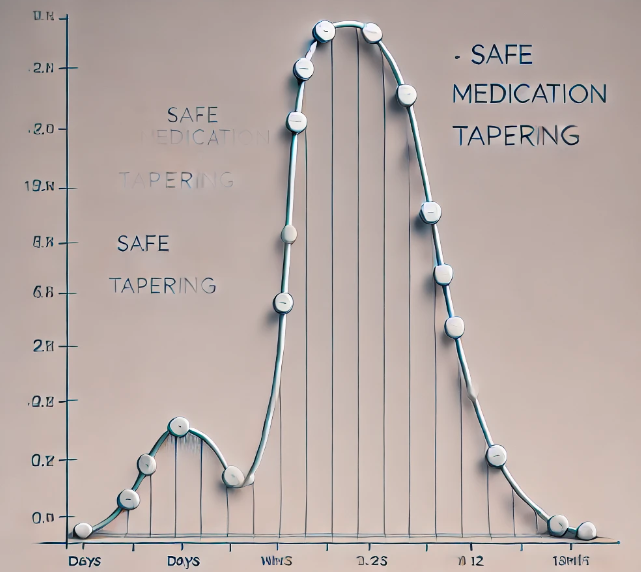Safe Opiate Tapering Schedule Calculator

Create Your Personalized Opioid Reduction Plan
Safely tapering off opioid medications requires a carefully planned approach, tailored to each individual's needs. Our opiate tapering schedule calculator helps you create a personalized plan for gradually reducing your opioid dosage under medical supervision. By following a structured tapering schedule, you can minimize withdrawal symptoms and increase your chances of successfully discontinuing opioid use.
This calculator uses the "Slower Taper" method, reducing the dose by 5% to 20% every 4 weeks.
Disclaimer
Important: This calculator is for informational purposes only and should not replace professional medical advice. Always consult with a healthcare provider before making any changes to your medication regimen. Taper App is a support tool only. It does not provide medical advice or tapering plans. Always follow your doctor's prescribed plan and consult with them before making any changes to your medication regimen.
Source
This calculator is based on information from the VA/DoD Clinical Practice Guideline for Opioid Therapy for Chronic Pain (2022).
Additional Resources
- VA Pain Management - Opioid Safety
- CDC Guidelines for Prescribing Opioids for Chronic Pain
- VA/DoD Clinical Practice Guideline for Opioid Therapy
- FDA Safety Measures for Opioid Analgesics
- SAMHSA Medication-Assisted Treatment
- National Institute on Drug Abuse - Opioids
Medical Journals and Research
Frequently Asked Questions About Opiate Tapering
What is the safest way to taper off opioid medications?
The safest way to taper off opioid medications is to follow a gradual reduction plan prescribed by your healthcare provider. This typically involves reducing the dose by 5% to 20% every 4 weeks, with regular check-ins to manage any withdrawal symptoms.
How long does a typical opioid tapering schedule last?
The duration of an opioid tapering schedule can vary widely depending on the individual, the starting dose, and the rate of reduction. It can range from several weeks to several months or even longer for those on high doses or long-term use.
What are common withdrawal symptoms during opioid tapering?
Common withdrawal symptoms during opioid tapering may include anxiety, irritability, insomnia, muscle aches, nausea, and increased pain sensitivity. These symptoms can be managed with support from your healthcare provider.
Can I use this calculator to taper off any type of opioid medication?
While this calculator provides a general guideline, it's crucial to consult with your healthcare provider for a tapering plan specific to your medication. Different opioids may require different tapering approaches.
What should I do if I experience severe withdrawal symptoms during tapering?
If you experience severe withdrawal symptoms during tapering, it's important to contact your healthcare provider immediately. They may adjust your tapering schedule or provide additional support to manage symptoms.